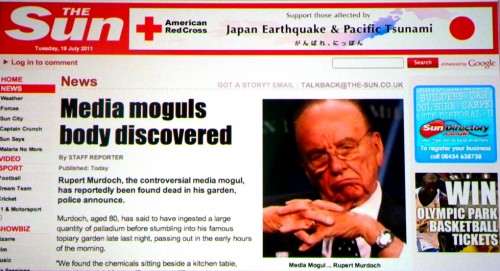“Media is the nervous system of a democracy.
If it’s not functioning well, the democracy can’t function.”
(Jeff Cohen, Director of the Park Center for Independent Media)
Julian Oliver & Danja Vasiliev have created Newstweek as a device for manipulating the news
read by other people on wireless hotspots. Built into a small, innocuous wall plug, the Newstweek device appears as part of the local infrastructure. This allows agents to remotely
edit news read on laptops, phones and tablets without the user being aware of this news alteration. Newstweek emerges as a symptom of our increasingly corporatized and mediated democratic reality. While news is increasingly read digitally, it still follows a traditional, top-down distribution model and thus often falls victim to the same political and corporate interests that have always sought to manipulate public opinion. Newstweek intervenes in this model, providing an opportunity for citizens to have their turn at manipulating the media, “fixing facts” as they pass across a wireless network. In this way, Newstweek can be seen as a tactical device for altering public reality on a per-network basis. Hotspots manipulable by Newstweek include cafes, libraries, hotels, universities and city-wide wireless networks.
Newstweek also signals a word of caution, that a strictly media-defined reality
is always a vulnerable reality. Today, as devices and their networks become ubiquitous,
ignorance as to how they function increases, offering an opportunity for the manipulation
of facts on their journey from source to destination (from server to screen).
Over at Imperica, you can read a little more about the project
as well as see a more in-depth video example of how the hardware works.
The photo above makes them appear mean, but it was the best of what I had taken.
I can assure you that they are very friendly and interesting guys who have done some
great, creative work. Below is their official video followed by their Forum presentation
where they spoke about the development of this project – a project that won them
a well-deserved Golden Nica in the Interactive Art category.
(thanks to Julian Oliver, Danja Vasiliev, & Ars Electronica)

